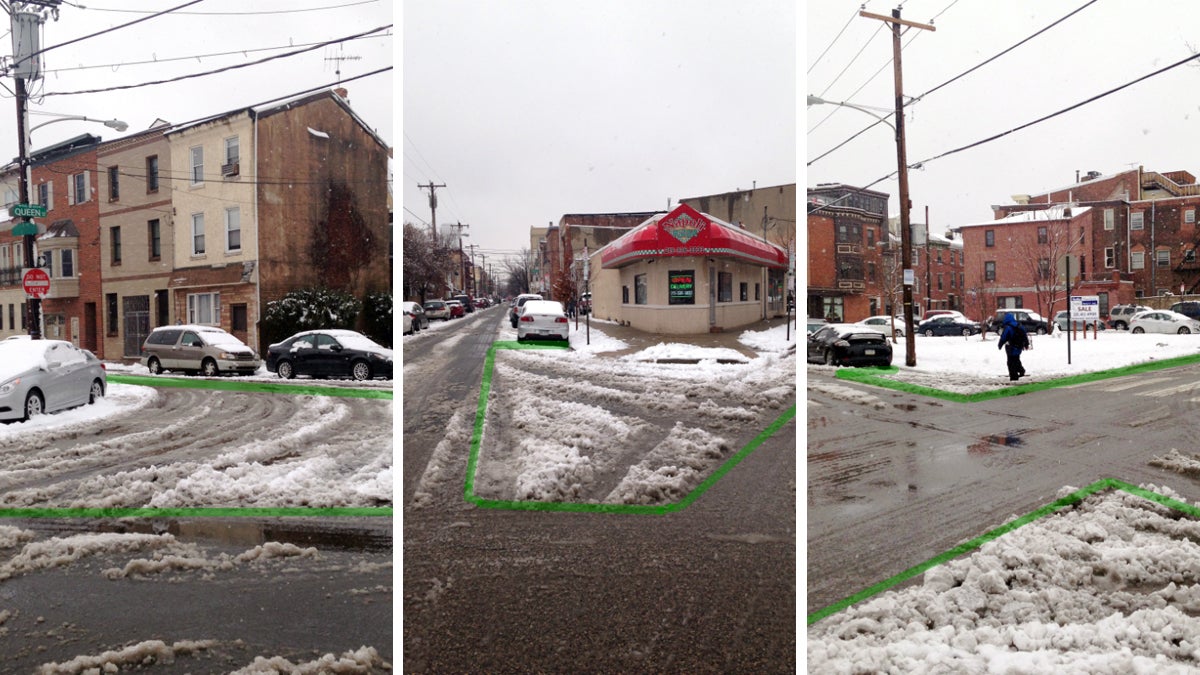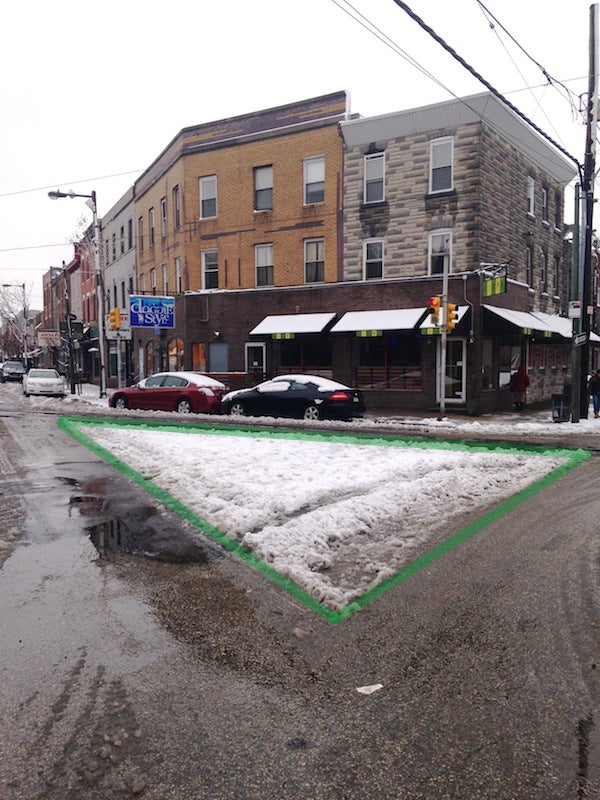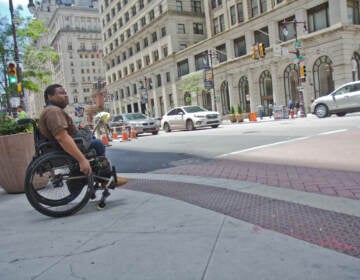How to squeeze more pedestrian space out of Philly’s narrow streets
As driving rates continue to decline across our region, we can expect to hear more walkers, bikers, and bus riders clamoring for a larger share of space on our public streets.

East Passyunk Avenue' diagonal route through South Philadelphia creates an abundance of space unused by cars. (Jon Geeting/PlanPhilly, file)
Speak Easy is examining issues of street use in Philadelphia. What should our priorities be to ensure safe streets for pedestrians, bicyclists, motorists and transit users? Seeking diverse perspectives on these issues, NewsWorks is hosting a public forum, “Philadelphia Streets Under Pressure,” on June 30 at WHYY studios. Registration is free at whyy.org/speakeasy.
—
As my fellow contributors in this series have done a fine job of explaining, the most important battleground in Philadelphia transportation politics for the foreseeable future will be the question of how much space on our streets should go to people, versus how much space should go to parked cars.
As driving rates continue to decline across our region, we can expect to hear more walkers, bikers, and bus riders clamoring for a larger share of space on our public streets.
And while it’s true that reallocating big swathes of street space for more bus lanes and bike lanes will continue to be grindingly difficult under current laws and policies, there’s still plenty of scope for short-term, smaller-scale and less-contentious actions to win more space for people.
The first thing to recognize is that there actually is a lot of wasted space on the streets that cars don’t (or at least shouldn’t) use. What’s more, it would be fairly inexpensive — both fiscally and politically — to start handing over more of this space to pedestrians.
The winter before last, I wrote a blog post for the Philly urbanism blog This Old City looking at snow formations on E. Passyunk Avenue after a storm, to see what they would tell us about the options for redesigning streets.
Every winter for the past few years, writers at Streetsblog in New York City had been documenting the phenomenon of the “sneckdowns” — a portmanteau of the words “snow” and “neckdown” that refers to the snowy curb extensions that calm car traffic.

The idea is that if snow patches remain fresh and white even after hours of cars driving past them, that proves those spaces aren’t really needed by motorists and can be used for things like sidewalk extensions, traffic islands, or even public seating space.
Unbeknownst to me at the time, University City District had already used sneckdowns to successfully advocate for pedestrian plazas in front of the Gold Standard Cafe at 48th and Baltimore Avenue. Snow formations showed that intersection was needlessly wide, helping UCD win approval from the city to do a cheap makeover using planters, big rocks, and paint.
I thought E. Passyunk Avenue would be a good place to observe the sneckdown phenomenon because of how it crosses the street grid at a diagonal. And to my delight, there turned out to be quite a few weird little snow triangles along the Avenue. That unused space has the potential to tame some of South Philly’s wonkiest intersections by pinching intersections, moving the stop lines up so opposing drivers can make eye contact, and just doing a better job of keeping everyone where they’re supposed to be.
Happily, long after the snow melted, the Passyunk sneckdowns are becoming a reality. Sam Sherman, the executive director of the Passyunk Avenue Revitalization Corporation, has been using the sneckdown images to persuade the Streets Department to let PARC build pedestrian plazas along the Avenue. Over at PlanPhilly I recently wrote about the latest plan for a plaza at 12th and Morris.
Now, it’s not precisely true that the sneckdowns only show space cars don’t use. As the back-and-forth over that particular plaza shows, there still are trade-offs. Both iterations of the plan would remove three parking spaces, along with several illegal, informally recognized spaces to make way for more curb space and crosswalks. That’s still a tough sell politically, and in years past that alone might have been enough to end discussion of the idea.
The late ward leader Carol Campbell famously held up restoration of the Route 15 trolley service, an $82 million public project that was already paid for, for more than a year over fewer illegal parking spaces than that.
The difference now is that the spate of low-car population growth that Philadelphia has enjoyed since around 2010 has opened up a bit more political space to debate the trade-offs between parking and better public spaces for people.
And crucially, political leaders in the community and in elected office are increasingly willing to take the public space side in that debate.
—
Jon Geeting is the engagement editor at Plan Philly.
WHYY is your source for fact-based, in-depth journalism and information. As a nonprofit organization, we rely on financial support from readers like you. Please give today.




